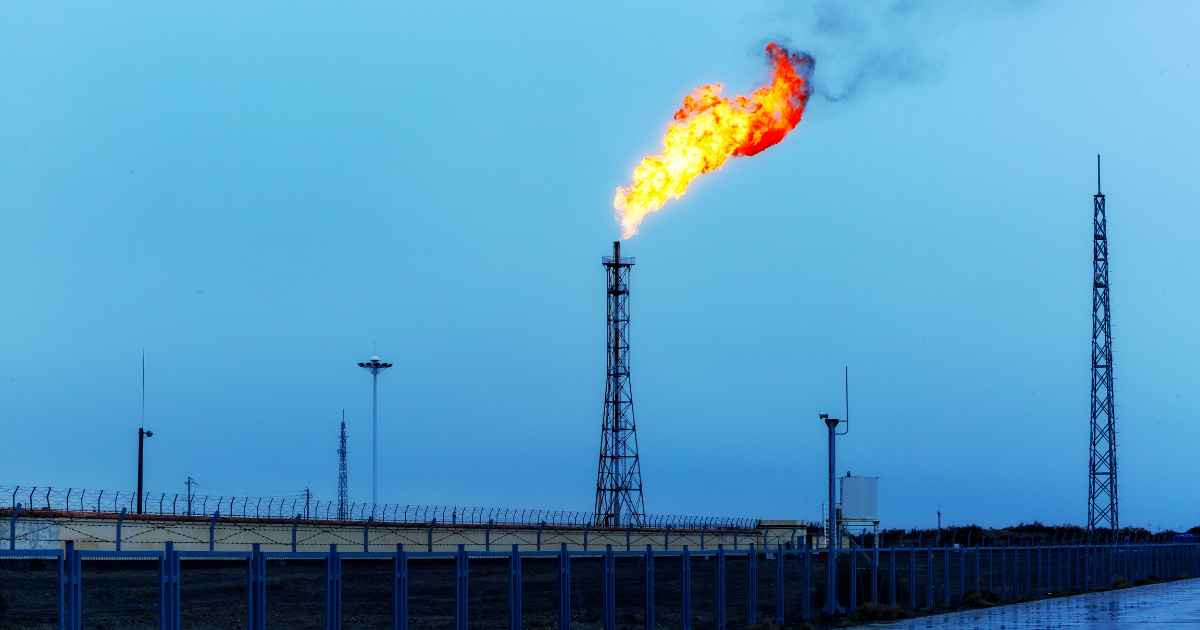The Ultimate Seller’s Guide for Oil and Gas Royalties
Let’s face it – oil and gas royalties are SUPER COMPLICATED! They are very complicated assets to own and even more complicated assets to sell. But fear not… anybody can figure out how to sell their oil and gas royalty interests by learning the ins and outs. The Ultimate Seller’s Guide for Oil and Gas Royalties is your ticket to sell your oil and gas royalties like a pro! If you would like a PDF version of this article that you can refer back to, click here to get your copy.

So you receive oil and gas royalty checks and you’re wondering if it might make sense to sell your royalty interests for a lump sum payment. Or maybe you’re:
- Not receiving oil and gas royalty checks yet but you expect future royalty payments.
- Thinking that you should be receiving royalty checks but don’t know why you’re not.
- Wondering how to claim your royalty income and get ready to find royalty buyers.
- Trying to understand mineral or royalty interests that you inherited.
Then you’re in luck! You’ve found just what you need to sell your oil and gas royalty interests – the Ultimate Seller’s Guide for Oil and Gas Royalties!
The first step on this journey is to understand what the heck an oil and gas royalty is in the first place. So let’s get started!
Oil and Gas Industry – What are Oil and Gas Royalties?
Oil and gas royalties are shares in the sales from oil and gas wells that the operators of those wells owe to other people. Oil and gas companies can’t just drill wells wherever they want…they have to get permission from landowners. This permission has to be negotiated and comes in the form of a lease. Like leases for apartments or office buildings, the lessee – in this case, the oil company – has to pay the lessor for the use of the property. The payment to landowners in an oil and gas lease comes in the form of an oil and gas royalty interest, which is a percentage share of the revenues that are produced from the well or wells that the oil company drills on the land.

But there’s more to it than that, so let’s dig a little deeper into the land that oil and gas companies drill wells on. Not all land has oil and gas underground, and it’s the job of specially-trained geologists to figure out where oil and gas is likely to be found. Once a petroleum geologist identifies a prospective spot for drilling a well, another type of oil and gas professional called a landman is tasked with leasing the lands that the prospective well site is located on. There are regulations that stipulate how much land is required to drill, and often the landman must secure leases with multiple landowners just to drill a single well. The landman must first find all these landowners by researching land title records at the county courthouse and then contact them with an offer to lease their land.

When an oil company leases land, does that mean they secure total access to the property or properties in question? No. Oil and gas leases cover all kinds of lands including rural properties such as farmland and urban properties with all kinds of improvements such as houses and office buildings. Oil and gas leases don’t interfere with these surface uses of the land other than temporary access during drilling and then limited ongoing access required for monitoring and maintaining the well and related equipment. And the owners of this farmland and these houses and office buildings are not necessarily included in the oil and gas lease.
Wait…what?! How can the oil company cut these owners out of the deal?! Because when it comes to real estate in the USA, title to the surface of the land and the subsurface where oil, gas and other minerals may exist can be separated (or “severed”, as lawyers phrase it) and this is very common. For land where surface and subsurface ownership has been severed, oil companies refer to these subsurface owners as “mineral owners” and what they own as “mineral interests”, “mineral acreage”, or just plain “minerals”. To fully understand what an oil and gas royalty interest is, we need to delve deeper still into the nuanced world or mineral interests.
The Three Stages of Mineral Interests
Mineral acreage passes through three stages in the oil and gas industry: 1) un-leased, 2) leased and non-producing, and 3) leased and producing.
Unleased Mineral Interests:
Un-leased mineral interests are percentage shares to the rights to oil and gas (in addition to other valuable commodities that might be extracted from below the surface like gold, silver or uranium) on a particular tract of land that has not been leased yet by an oil company (or was leased but the lease expired).
Most mineral acreage is un-leased and never will be leased because it’s virtually certain that there is no oil and gas to be found there. But some mineral acreage sits within areas of the country where oil and gas deposits exist and thus there is a chance that an oil company might make an offer to lease it.
When an oil company sets its sights on drilling on a particular tract, that’s when their landman goes to work to secure leases from the mineral owners of that tract, as described above.
Leased, Non-Producing Mineral Interests:
Once the oil company secures all the executed lease agreements that fully cover the tract, the mineral interests under that tract are now leased and non-producing. The mineral owners typically receive cash upfront for signing the mineral lease called a lease bonus.
This bonus is some negotiated rate per acre multiplied by the mineral acres owned. In addition to this, the mineral owner receives the right to receive royalties on future oil and gas sales if and when the oil company drills successfully.
Leased, Producing Mineral Interests:
After the oil company drills a viable oil and gas well and it starts producing oil, the mineral interests are now not only leased but producing and the associated oil and gas royalties kick in. So it’s at this point that the oil company is responsible for distributing oil and gas revenues according to the terms of the lease agreements.
Now that you understand the three stages of mineral interests and how oil and gas royalties kick in when minerals reach the third stage of leased/producing, let’s take a look at the bigger picture of oil and gas leasehold interests.
The Three Major Types of Oil and Gas Leasehold Interests
Oil and gas royalty interests are one of the three major types of oil and gas leasehold interests that split the cash that comes from oil and gas production. The following are the other two major types of oil and gas leasehold interests.
Working Interests:
The oil company retains the bulk of the cashflow for oil and gas production in the form of working interests. Working interests tend to account for 70 to 90% of oil and gas revenues, but ongoing costs of operations (production costs) are deducted first and the amount that’s left over has to pay back the upfront drilling costs before the oil company makes a profit.

Overriding Royalty Interests:
Sometimes the oil company cuts a deal for key service providers whereby they receive a cut of the oil company’s working interest revenue but with no deduction for operating expenses. This is called an overriding royalty interest and it works a lot like the royalty interests that mineral owners receive.
Overriding royalty interests aren’t quite as sweet as the mineral owner’s royalty interest, however, because whenever the oil and gas lease expires so does the overriding royalty interest, whereas the mineral interest lives on though now in the un-leased phase with no royalty income.
Well, you now know a lot about mineral interests and leasehold interests including royalty interests. But you need to know more about the “oil and gas” part before we move onto selling oil and gas royalty interests.
Types of Petroleum
The generic term that geologists use for black gold and the other valuable stuff that comes out of oil and gas wells is petroleum (or hydrocarbons). How did petroleum wind up underground? Millions of years ago organic material such as the sludge at the bottom of shallow seas got covered up under layers and layers of earth until the right combination of pressure and heat transformed the material chemically into oil, natural gas and water. Geologists look for places where petroleum might have become trapped in pockets or reservoirs.

The geology and physics can be confusing, but for various reasons wells can produce any combination of oil, natural gas, and the pesky byproduct of water. And as many royalty owners know, there are multiple types of related commodities that pay out on oil and gas royalty checks, such as the following.
- Oil – crude oil is the stuff from which gasoline, motor oil, jet fuel and lots of other useful products are extracted in huge refineries in places like the Texas Gulf Coast. Crude oil is perhaps the king of all global commodities and central to modern life and geo-politics.
- Natural gas – natural gas is another crucial commodity that serves as fuel for cooking and so much more, such as electricity generation and transportation.

- Natural gas liquids – another form of hydrocarbons that comes from some wells are liquids like propane that serve as fuels and other commercial uses, like feedstock for plastics. Other terms for natural gas liquids that often appear on oil and gas royalty checks are “plant products” or “condensate.”
So now you’ve learned what oil and gas royalty interests are all about. Let’s bring it all together with some quick tips on lingo so you’ll sound like a pro.
Which is it – a mineral or a royalty interest?
As you learned above, there’s a difference between mineral and royalty interests, though they’re interrelated. But in the oil business, people often use the terms interchangeably when they talk about oil and gas royalty interests. They might call them “producing minerals”, or just “minerals.” They often also call them “royalty interests” or just “royalties.” There are however instances where royalty interests are not also mineral interests and vice versa. For instance, sometimes a mineral owner conveys the right to royalty income to someone else but only during the term of the lease and retains the perpetual mineral ownership beyond the term of the lease for him or herself. These non-mineral royalty interests are less valuable than full producing mineral interests and comparable in value to overriding royalty interests. On the other had, mineral interests that are non-producing should no be referred to as “royalty interests” because there is no lease agreement in effect and thus no royalty income to be had, as covered above. So although the terms “minerals” and “royalties” are often used interchangeably they are not technically the same thing and sometimes only one term or the other should be used to describe the ownership interest.
Which is it – an oil royalty, a gas royalty or both?
Here again, people in the industry use the terms in a lot of ways. Some royalty interests are in wells that make only or mostly oil, and regulators classify these as oil wells. Often people refer to royalty interests in these wells as “oil royalty interests” or “oil royalties.” The same goes for wells that make mostly gas, in which industry people talk about “gas royalty interests” or “gas royalties.” But more often, people will refer to either of these with the more generic terms “oil and gas royalty interests” or just “royalties”, which apply no matter what mix of oil and natural gas is produced.
Now that you know what you’re talking about let’s delve into how to know if you own oil and gas royalty interests.
How to know if you own Oil and Gas Royalties?
Oil and gas royalty checks are the clearest sign that you own oil and gas royalty interests and that these royalty interests are in order. The professionals at oil companies who are responsible for seeing to it that all leasehold interest owners including royalty owners are paid their share of proceeds from oil and gas sales are called “division order analysts.”
For each lease, division order analysts maintain what they call an “owner deck” – which is a list of every leasehold interest holder in the lease with their address, type of interest (i.e., working interest, royalty interest or overriding royalty interest), and the percentage share of oil and gas proceeds, which they call a “decimal of interest” or “DOI” for short.
Often however oil and gas royalty interests are not in order for a variety of reasons including an out-of-date address for the royalty owner. In these instances, the division order analyst will place the royalty interest on hold, which they refer to as placing the royalty “in suspense.”
This is quite common and there are lots of royalty owners who do not receive royalty checks for this reason and many who aren’t even aware they own royalties. Often this happens when royalty interests transfer between generations but the heirs are not aware that their parents owned royalties and fail to complete paperwork necessary to transfer those royalty interests into their name.
How to go about getting an oil and gas royalty interest out of suspense can be an ordeal and we will soon provide another guide for navigating that process.
When sorting through a deceased parent’s estate, the following are the main clues that they owned royalty interests.
- Mineral conveyances – A mineral conveyance (also called a mineral deed) is the legal document by which mineral interests are conveyed from one owner (the grantor) to another (the grantee). These documents are recorded at the county courthouse of the county in which the oil and gas minerals are located. Like a deed for a house, this is an important document that many people will keep on file. When a deceased parent does not have a copy of a mineral deed in their records, it’s also possible to look it up at the county clerk’s office or online.
- Royalty conveyances – Sometimes people grant less than their full, perpetual mineral interests but rather just the right to the royalty income while the lease remains in effect, as described above. This is done by way of a royalty conveyance (also called a “royalty deed” or “royalty assignment”), and this is typical for overriding royalty interests that are conveyed by way of overriding royalty assignments. Royalty conveyances are also important documents that most people will keep on file, but that otherwise can be looked up in county records.
- Oil and gas leases – The oil and gas lease is the contract that establishes the agreement between the oil company (the lessor) and the mineral interest owner (the lessee). Mineral owners will often save copies of these documents in their files.
- Division orders – A division order is the document issued by a division order analyst at the oil company to a royalty owner indicating the oil company’s record of the oil and gas royalty interest. Division order analysts issue division orders when leasehold interest owners submit mineral or royalty conveyances as notification that mineral or royalty interests have changed hands. The division order is another important piece of documentation of oil and gas royalties and commonly filed away.
- Oil and gas royalty check stubs – Diligent mineral and royalty owners often save and file away the detailed enclosures that come with their oil and gas royalty checks, which are commonly referred to as oil and gas royalty check stubs (or simply “check stubs”).
If you find any of these things in your parents’ files, there’s a good chance they owned oil and gas royalty interests and depending on their will these royalty interests may now belong to you.
When does it make sense to sell oil and gas royalties?
Many people with oil and gas royalties passed down their family tree have heard from their parents or grandparents to never sell their minerals and royalties. There is sound wisdom behind this in that mineral acreage may have the potential for additional future production due to additional spacing for new wells or other viable zones of production above or below where existing wells produce from.

Ingenuity in the petroleum industry has unlocked more and more of this potential over the decades, such as with the shale revolution of recent decades that combined drilling horizontally with fracturing otherwise non-flowing petroleum with water and chemicals injected downhole at high pressure. But the potential for additional future production is not the only reason to hold onto oil and gas royalty interests – oil and natural gas prices fluctuate and there’s a chance that they will go up and with them the value of the mineral rights.
But there are circumstances that come up that cause oil and gas mineral rights owners to reconsider the advice of their parents and grandparents.
The following are common examples:
Investment opportunities
Some oil and gas royalty owners choose to sell their royalty interests to invest in other assets, like a house or the stock market or their children’s college educations.

Family emergencies
Unexpected medical expenses, losses of employment and other unpleasant surprises are also common reasons for selling oil and gas royalty interests for a lump-sum payment.

Settling debts
Another common financial reason to sell oil and gas royalty interests is to pay off debts and cut interest expenses. For instance, some oil and gas royalty interest owners sell out to pay off a house, a car, student loans or credit cards.

Simplifying estates
Some oil and gas royalty owners choose to sell their minerals and royalties so they can pass on cash to their heirs and avoid the complicated paperwork involved in transferring the royalty interests. This is particularly common when the oil and gas royalty interests generate modest income and there are multiple heirs who would wind up with insignificant checks that don’t justify the tax complications and other headaches.

Selling or holding onto oil and gas royalty interests can be an important decision and it’s up to the individual royalty owner to weigh the pros and cons.
How to sell your oil and gas royalties?
Those oil and gas royalty owners who do choose to sell must have clean title, which means that the title records at the county clerk’s office show that the owner has uncontested ownership of the oil and gas royalties with no liens, back taxes or other encumbrances against them. Some buyers are willing to clear up issues like these as a part of the transaction.
In addition to clear title, oil and gas royalty owners must submit some level of documentation to prospective buyers, and that depends on which route you take in selling your oil and gas royalty interests. Let’s examine those options.

Using an agent to sell oil and gas royalties
Some oil and gas royalty owners engage third-party agents to help them sell their royalty interests. The two main options for this are brokers and auctions.
- Brokers – There are brokers who specialize in helping owners sell oil and gas royalties for a fee or commission. Some brokers will take on oil and gas royalties that bring in less than say $100,000 per year, but most brokers prefer to sell larger packages to make it worth their time. Brokers that specialize in larger transactions of oil and gas royalties making a $1 million or more in annual income are also known as investment bankers. Brokers typically take between five and ten percent of the transaction amount as their commission. This covers their efforts in assembling what’s called a “data room” of materials about the royalty interests and bringing in multiple potential buyers to bid on the interests to arrive at a final sale. The documentation required for a data room is exhaustive.
- Auctions – There are a few auctions that specialize in oil and gas assets, such as the traditional auction house Oil and Gas Clearinghouse and the Ebay-like online auction site Energynet.com. These auctions operate similarly to brokers in that they prepare data rooms and conduct bidding processes involving multiple bidders for a commission. But auctions do a lot more transactions than brokers, including smaller oil and gas royalty packages. The data that auction houses require from sellers is extensive but not quite so much as typically required by brokers and investment bankers.
DIY – Selling oil and gas royalty interests yourself
Some oil and gas royalty owners opt not to use third-party agents and instead sell their royalty interests to family members or acquaintances. This is less common, as finding someone willing to buy oil and gas royalties can be like finding a needle in a haystack and many mineral and royalty owners do not know how to complete a transaction. Those who do typically hire an oil and gas attorney to prepare the legal documents.
Selling to oil and gas royalty companies
There are companies who go out of their way to find and make offers to oil and gas royalty owners who are considering selling. Some of these royalty companies specialize in particular regions of the country or property types. These companies tend to require less documentation than brokers or auctions and handle most if not all closing details. They incur a lot of costs in seeking out sellers and performing in-depth services, and thus tend to offer lower payouts than brokers and auctions often bring.
Choosing which of these options makes the most sense depends on the oil and gas royalty owner’s holdings, abilities, and goals. The table below lays out some of these considerations.
| Option: | Transaction Sizes | Documentation Requirements | Typical Payouts |
| Brokers | Large | Very Demanding | High |
| Auctions | Small to Large | Demanding | High |
| DIY to Family or Acquaintances | Small to Large | Depends | Depends |
| Oil and Gas Royalty Companies | Small to Large | Less Demanding | Low to Medium |
So how much can you hope to sell your oil and gas royalty interests for?

That depends not only on the option that you choose above but also the characteristics of your oil and gas royalty interests themselves. Some of the key characteristics that factor into how much oil and gas royalty interests sell for are the following:
- Reserves – The amount of hydrocarbons under ground is limited and some tracts of land have more reserves than others. What’s more, some properties have had wells in production for a long time and much of their original reserves have already been depleted. There are specially-trained petroleum engineers called “reservoir engineers” who estimate how much additional production can be expected on a tract of land and how quickly this production will decline over time.
- Future oil and gas prices – Nobody has a crystal ball so nobody knows how much oil and gas will sell for in the future. But reservoir engineers make assumptions about future prices and multiply those prices times projected production levels to estimate the oil and gas sales from a tract of mineral acreage over its life.
- Leasehold expenses – The oil company incurs costs in operating oil and gas wells and the reservoir engineer takes these costs into account in estimating when the sales off the lease will no longer cover costs and the oil company will have to cease production (what they call “shutting in” the wells).
- Additional well spacing and potential zones of production – The reservoir engineer also determines whether there is the potential for new production from additional wells or other zones above or below the current depth of production, and assigns additional value accordingly.
Each bidder for oil and gas royalty interests typically takes these factors into account in coming up with how much they’re willing to pay. Naturally buyers prefer to pay less and getting multiple bids is usually the key to achieving the highest price possible. Using brokers and auctions is typically the best way to get the most bids, but it’s also recommended to get more than one offer even if DIY selling to family or acquaintances or negotiating with oil and gas royalty companies.
Summary
To recap, oil and gas royalty interests are complicated assets that arise out of leases between petroleum companies and mineral owners. A lot of people inherit oil and gas minerals and royalties, and there are several types of ownership documentation to establish whether or not oil and gas royalties are part of an estate.
The common wisdom is to avoid selling minerals and royalties due to potential for increased production and rising oil and gas prices, but many people choose to sell anyway for a host of reasons like alternative investments, unexpected cash needs, or simplifying an estate. The options for selling oil and gas royalty interests include brokers, auctions, DIY to family or acquaintances, and oil and gas royalty companies.
Choosing the right option for selling oil and gas royalty interests depends on the size of the holdings and the capabilities and willingness of the seller to strive for top dollar through soliciting multiple bids. If you’re an oil and gas royalty owner and selling has crossed you mind, we hope this Ultimate Seller Guide for Oil and Gas Royalty Owners has equipped you to get a good price for your oil and gas royalties. Good luck!
